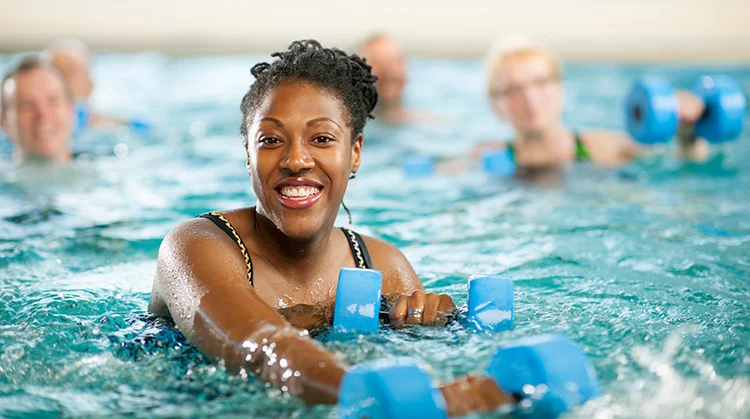Swimming pools have long been the epitome of relaxation and fun, especially during scorching summer days. The promise of excellent, crystal-clear water can be enticing, drawing us in for a refreshing dip. However, beneath the shimmering surface lies a responsibility that every pool owner must shoulder – the safety and cleanliness of the pool water. MX6 Zodiac is one of the leading pool cleaners designed to assist you in maintaining a pristine pool environment. Its efficient cleaning capabilities can help you keep your pool water crystal clear, ensuring the well-being of all swimmers. This article will explore the crucial realm of pool safety and water cleanliness, exploring their intertwined significance. As we journey through these topics, you’ll gain a deeper understanding of why clean pool water isn’t just about aesthetics; it’s a matter of the health and well-being of swimmers. Let’s embark on this exploration to ensure every swim in your pool is safe and enjoyable.
The Significance of Pool Safety
As a pool owner, the safety of those who use your pool should be a top priority. It’s not merely a matter of following regulations; it’s about creating an environment where swimmers can relax and have fun without fear. Clean water plays a pivotal role in ensuring the safety of your pool.
Here’s why pool safety is paramount:
- Preventing Accidents: A clean, well-maintained pool is less likely to harbor hidden hazards. Debris, algae, and contaminants can slip on the pool floor, increasing the risk of accidents and injuries.
- Water Clarity: Clean water allows for better visibility, enabling swimmers and lifeguards to monitor the pool effectively. Clearwater ensures that responders can see and reach distressed swimmers promptly in emergencies.
- Chemical Balance: Maintaining the proper chemical balance in your pool is crucial for safety. Poorly balanced water can lead to eye and skin irritations, making the swimming experience uncomfortable or harmful.
- Preventing Waterborne Illnesses: Contaminated water is a breeding ground for harmful bacteria and parasites. Swimming in such water can lead to waterborne illnesses, including gastrointestinal and respiratory problems.
Health Risks in Contaminated Pools
Now that we’ve established the significance of pool safety let’s delve deeper into the potential health risks associated with swimming in pools with poor water quality:
- Waterborne Illnesses: Contaminated pool water can harbor various pathogens, including bacteria and parasites. Swallowing, inhaling, or coming into contact with this contaminated water can lead to waterborne illnesses. Symptoms may include diarrhea, nausea, vomiting, and respiratory issues.
- Skin Irritations: Algae, mold, and other microorganisms thrive in poorly maintained pools. Swimmers exposed to these contaminants may develop skin irritations, such as rashes, redness, or itchiness. This can be particularly distressing, especially for children.
- Eye Irritation: Unbalanced pool water with improper pH and chlorine levels can cause eye irritation. Swimmers may experience redness, burning sensations, or excessive tearing, leading to discomfort and reduced enjoyment.
- Respiratory Problems: Inhaling airborne contaminants from pool water can lead to respiratory problems, especially in indoor pool environments. Chlorine fumes and mold spores can irritate the respiratory system, causing coughing, wheezing, or shortness of breath.
Understanding Pool Water Contaminants
To maintain a safe and clean swimming environment, we must understand the common contaminants that can infiltrate pool water. Among these, algae and bacteria are two of the most notorious culprits:
- Algae: These microscopic aquatic plants thrive in sunlight and warm temperatures. Once they find their way into your pool, they can rapidly multiply, leading to an algae bloom that can transform your inviting pool into a green nightmare. Algae affect the water’s clarity and can make surfaces slippery, increasing the risk of accidents.
- Bacteria: Harmful bacteria can take root in pool water, especially when not adequately chlorinated or maintained. Contaminated pool water becomes a breeding ground for these microorganisms, posing a significant health risk to swimmers. Exposure to such bacteria while swimming can lead to gastrointestinal illnesses, respiratory problems, and other infections that can damper your summer fun.
Understanding these contaminants and their potential consequences underscores the importance of regular pool maintenance and water quality monitoring.
Testing Water Quality
Regular water testing is the linchpin of pool maintenance, ensuring your pool water remains safe and inviting. Performing basic water quality tests can provide valuable insights into the condition of your pool water. Here’s why it’s crucial:
- Maintaining Chemical Balance: Water testing helps you assess essential chemicals like chlorine, pH, and alkalinity. Properly balanced water prevents algae growth, promotes swimmer comfort, and ensures clarity.
- Early Detection: Regular testing allows you to detect imbalances or contamination early. By catching issues at their inception, you can address them promptly, preventing them from escalating into more significant problems.
- Swimmer Safety: Testing ensures that the pool water is safe for swimmers. It helps you avoid the potential health risks of contaminated water, such as waterborne illnesses and skin irritations.
Basic water quality tests involve measuring chlorine levels, pH balance, alkalinity, and more. These tests provide valuable data that inform your next steps in maintaining a clean and safe pool environment.
Balancing Pool Chemicals
Maintaining the proper chemical balance in your pool is fundamental to water quality. Essential pool chemicals like chlorine, pH, and alkalinity play vital roles in this balance:
- Chlorine: Chlorine is the primary sanitizer in pool water. It effectively kills bacteria, viruses, and algae, keeping the water safe for swimmers. Maintaining the proper chlorine levels is essential for water clarity and swimmer health.
- pH: pH measures the acidity or alkalinity of pool water. Proper pH levels ensure swimmer comfort and prevent damage to pool equipment. High or low pH can lead to issues like eye and skin irritation and scale buildup.
- Alkalinity: Alkalinity acts as a buffer against pH fluctuations. It helps stabilize the water and prevent rapid changes in pH. Balanced alkalinity contributes to overall water quality and swimmer comfort.
Regularly testing and adjusting these chemical parameters ensures your pool water remains clear, safe, and enjoyable. In the following sections, we’ll provide guidelines for maintaining the proper chemical balance so you can take proactive steps to keep your pool pristine throughout the swimming season.
Filtration and Circulation
Effective filtration and circulation systems are the unsung heroes in the battle for clean pool water. These components work tirelessly behind the scenes to keep your water crystal clear and safe for swimming. Here’s how they do it:
- Pool Filters: Filters remove particles and contaminants from the water. There are different types of pool filters, including sand, cartridge, and diatomaceous earth (DE) filters. They capture debris, dirt, and even tiny microorganisms, preventing them from re-entering the pool. Regular cleaning and maintenance of your pool filter are essential to ensure it functions optimally.
- Pool Pumps: Pumps play a crucial role in pool water circulation. They help distribute pool chemicals evenly, prevent stagnant areas, and ensure water passes through the filtration system effectively. A well-functioning pump is essential for maintaining water quality.
To optimize your filtration and circulation systems:
- Clean and Backwash Filters: Regular cleaning or backwashing is necessary, depending on your filter type. This prevents clogs and ensures that the filtration process remains efficient.
- Check for Leaks: Inspect your pool’s circulation system for any leaks or issues hindering its performance. Leaks can lead to reduced circulation and compromised water quality.
Cleaning and Skimming
Regular cleaning and skimming are the visible steps to maintaining a sparkling pool. These practices help remove debris, leaves, insects, and other contaminants that can make their way into your pool. Here’s a step-by-step guide to keeping your pool surfaces and water clean:
- Skim the Surface: Using a skimmer net removes leaves, insects, and other debris from the pool’s surface. Regular skimming prevents debris from sinking to the bottom, making cleaning more manageable.
- Vacuum the Pool: Invest in a pool vacuum cleaner to remove dirt and debris that settle on the pool floor. Ensure that your vacuuming routine covers the entire pool area.
- Brush Pool Surfaces: Brush the pool walls and floor to dislodge algae and other contaminants. Regular brushing helps prevent algae buildup and keeps the pool surfaces clean and slip-free.
- Empty Skimmer Baskets: Check and empty the skimmer and pump baskets regularly. Clogged baskets can impede water circulation and filtration.
- Shock Treatment: Periodically, administer shock treatment to your pool. This involves adding a high chlorine dose to kill contaminants and restore water clarity.
Adhering to these cleaning and skimming practices will maintain a visually appealing pool and contribute to water quality and swimmer comfort.
UV and Ozone Treatment
While traditional pool maintenance methods like chlorine and filtration are practical, some owners explore alternative technologies to enhance water quality. UV (Ultraviolet) and ozone treatment are two such options:
- UV Treatment: UV systems use ultraviolet light to disinfect pool water by killing bacteria, viruses, and other microorganisms. UV treatment is a chemical-free and environmentally friendly method that can enhance water clarity and reduce the reliance on chlorine.
- Ozone Treatment: Ozone generators produce ozone gas, a powerful oxidizer. Ozone treatment can help break down contaminants, improve water clarity, and reduce the need for large amounts of chlorine. It’s another option for pool owners looking to minimize chemical usage.
These alternative methods offer potential benefits for water quality and swimmer comfort. However, they should be used with traditional pool maintenance practices for the best results. Understanding the options available allows you to make informed choices about maintaining the cleanliness and safety of your pool water.
Safety Measures
Ensuring pool safety goes beyond water quality and involves physical precautions to prevent accidents. Here are some essential safety measures to consider for your pool:
- Pool Covers: Invest in a sturdy pool cover that can be securely fastened when not used. Pool covers prevent accidental falls into the water and help keep debris out, reducing the workload on your filtration system.
- Fences and Barriers: Installing a pool fence or barrier is vital, especially if you have young children or pets. These barriers are a physical barrier to accessing the pool area, reducing the risk of unsupervised entry.
- Alarms: Consider installing pool alarms that alert you to unauthorized access to the pool area. These alarms can be placed on gates, doors, or directly in the pool to detect movement in the water.
- Supervision: Remember to pay attention to the importance of supervision, mainly when children are around. Assign a responsible adult as a designated pool watcher and establish clear rules about pool usage and safety.
Conclusion
In conclusion, water safety and cleanliness are paramount for creating a happy and healthy swimming environment. Enjoying your pool oasis should always be accompanied by a commitment to the well-being and safety of everyone who takes a dip. By taking proactive steps to maintain your pool’s safety and water cleanliness, you ensure a season of uninterrupted pool enjoyment while safeguarding the well-being of those who take the plunge. Your pool can be a source of endless summer memories, so make it a safe and inviting oasis for everyone.





